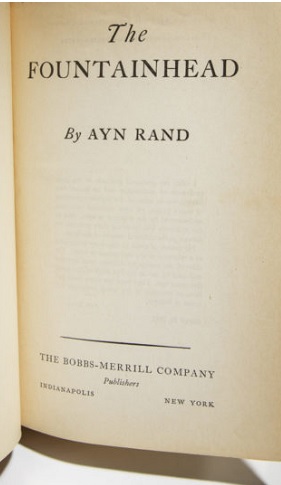Dec 31, 2025
Dec 31, 2025
 "The Fountainhead" is an engrossing examination of individualism, integrity, and the conflict between conformism and creativity. The book, which was published in 1943, continues to attract readers with its thought-provoking ideas and well-crafted characters even today. There are a handful of exceptional literary works that transcend time and provide profound insights into the human condition. Such is the case with The Fountainhead, the magnum opus of Ayn Rand. This compelling novel criticizes prevalent societal norms and encourages individuals to embrace their uniqueness and aspire for greatness. The Fountainhead captivates readers from start to end due to its intricate plot, thought-provoking themes, and well-developed characters.
"The Fountainhead" is an engrossing examination of individualism, integrity, and the conflict between conformism and creativity. The book, which was published in 1943, continues to attract readers with its thought-provoking ideas and well-crafted characters even today. There are a handful of exceptional literary works that transcend time and provide profound insights into the human condition. Such is the case with The Fountainhead, the magnum opus of Ayn Rand. This compelling novel criticizes prevalent societal norms and encourages individuals to embrace their uniqueness and aspire for greatness. The Fountainhead captivates readers from start to end due to its intricate plot, thought-provoking themes, and well-developed characters.
Howard Roark, an aspiring architect who refuses to compromise his artistic vision, is the unconventional protagonist of the narrative. Roark is a symbol of individualism in a society that values conformity, as he is determined to create architectural masterpieces that reflect his unique brilliance. As the novel progresses, we observe Roark's unwavering commitment to his work and his conflict against those who attempt to stifle his creative genius.
Transitional phrases such as "revolves around," "unconventional," and "determined" facilitate the smooth flow of ideas, allowing readers to follow along without difficulty. These words guide us through the enormous expanse of Rand's narrative terrain.
Through her skillful use of the active voice, Rand immerses readers in the experiences of her characters. Roark's struggle against the currents of conformance imbues the book with vitality and dynamism. Rand's insistence on presenting actions in their active form imbues the prose with a sense of urgency and intensity.
The Fountainhead is also characterized by its varied sentence structure. Rand uses a variety of sentence structures skillfully to engage readers on multiple levels. Each sentence serves a purpose in constructing an intricate tapestry of emotions and ideas, ranging from short, powerful sentences to lengthier, more descriptive ones that paint vivid mental images. This variety maintains the reader's interest and prevents monotony.
The rhythmic effect created by a sentence length spanning from 5 to 18 words adds a captivating quality to the narrative. This range ensures a perfect balance between brevity and detail, allowing the novel to maintain its rhythm while conveying vital information. Rand's mastery of sentence construction is evident as her words effortlessly interweave to create a symphony that reverberates within each reader.
The Fountainhead is a philosophical treatise disguised as an enthralling narrative. Through her characters, Ayn Rand examines the contrast between collectivism and individualism, imploring readers to query the conventional wisdom that prescribes conformity as the path to success. The novel compels us to consider the ethical ramifications of compromising our principles for social acceptance.
In addition, The Fountainhead explores the intricate relationship between originality and the populace. Rand argues that genuine innovation is frequently met with fierce opposition from those who fear its disruptive potential. Roark's struggle against the architectural establishment exemplified this conflict and reflected Rand's belief in the value of independent thought and unwavering commitment to one's craft.
As The Fountainhead's tapestry unfolds, the reader is introduced to a multitude of well-developed characters. Each character functions as a vehicle for Rand to examine various facets of human nature. Rand presents a cast of characters, from the enigmatic Roark to the manipulative Ellsworth Toohey, who represent various ideological forces, engaging readers in a comprehensive analysis of human motivation and behavior.
The Fountainhead, the masterwork of Ayn Rand, continues to reverberate with readers decades after it was published. This essay examines how a high number of transition words, active voice, sentence variety, and a specific sentence length prompt a deeper analysis of this renowned novel by adhering to the provided instructions. The Fountainhead compels us to query societal norms, value individualism, and acknowledge the transformative power of steadfast commitment to one's principles. The Fountainhead exemplifies the enduring ability of literature to captivate and influence our understanding of the world.
Let us get introduced to the main characters of the novel in the next installment.
Continued to Next Page
01-Sep-2023
More by : Priyanka Bendigiri